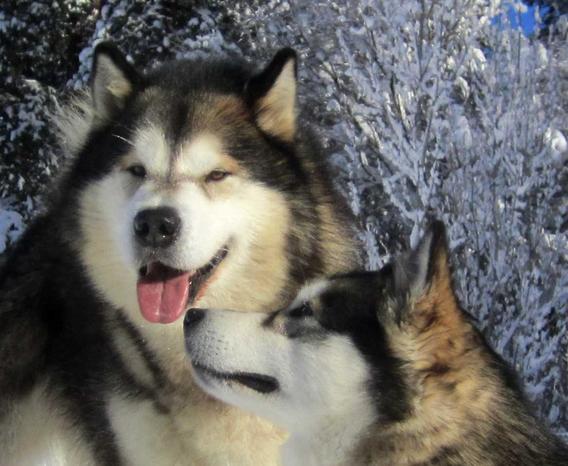
Alaskan Malamute dogs may suffer from a neuromuscular disease called Alaskan Malamute Polyneuropathy (AM-PN). This disease is usually detected between 3-19 months of age. The dog suffers from slowly worsening exercise intolerance and may develop gait abnormalities, especially in the hind limbs that may progress to ambulatory paraparesis, in some severe cases deteriorating to non-ambulatory tetraparesis. There is often wasting of the hind limb muscles as well. Additionally, these dogs may have noisy breathing, a change in their bark, or even difficulty breathing due to involvement of the larynx and laryngeal folds in the throat. Biopsies of nerve from affected dogs show degradation of the nerve fibers and loss of myelin, the insulating material that normally helps speed messages along nerves. Muscle biopsies show atrophy resulting from nerve fiber loss.
Research carried out at the University of Copenhagen, in collaboration with the University of Minnesota, the Norwegian School of Veterinary Medicine, the University of Helsinki, the Swedish University of Agricultural Sciences, the University of Bern, and the University of California San Diego, indicates that Alaskan Malamute polyneuropathy is a genetically distinct, autosomal recessive neuromuscular disease.
Scientific References
A Gly98Val Mutation in the N-Myc Downstream Regulated Gene 1 (NDRG1) in Alaskan Malamutes with Polyneuropathy.
Bruun CS, Jäderlund KH, Berendt M, Jensen KB, Spodsberg EH, Gredal H, et al. (2013)
PLoS ONE 8(2): e54547. doi: 10.1371/journal.pone.0054547